Section Paloise
Section Paloise, often referred to simply as Section or Pau, is a professional rugby union club based in Pau, France. They are participants in the Top 14, France's premier rugby division, and also compete in the EPCR Challenge Cup.[1]
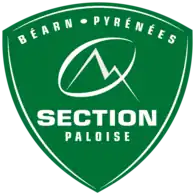 | |||
| Full name | Section Paloise Béarn Pyrénées | ||
|---|---|---|---|
| Nickname(s) | Section Pau Les Sectionnistes | ||
| Founded | 1902 | ||
| Location | Pau, France | ||
| Ground(s) | Stade du Hameau (Capacity: 18,324) | ||
| President | |||
| Coach(es) | |||
| Captain(s) | |||
| League(s) | Top 14 | ||
| 2022–23 | 12th | ||
| |||
| Official website | |||
| www | |||
Their home matches are played at the Stade du Hameau, following 80 years of hosting games at the Stade de la Croix du Prince (1910-1990). The club boasts an impressive history, having clinched the Bouclier de Brennus three times in 1928, 1946 and 1964 along with securing the European Challenge in 2000.
Section Paloise has also earned victories in the Challenge Yves du Manoir in 1939, 1952 and 1997. Additionally, they claimed the French Pro D2 title in 2015.
As a formidable presence in French rugby, the club has become a cherished symbol of Béarn culture and heritage. The official anthem of Section Paloise is "Honhada," a tradition that began in March 2012.[2] The lyrics of this anthem were composed to the tune of the famous Scottish ballad The water is wide.
Significantly, Section enjoys sponsorship from the renowned French petroleum company, TotalEnergies. This partnership holds historical significance for Pau, as it traces back to the origins of Elf Aquitaine, stemming from the Lacq gas field. Elf Aquitaine subsequently evolved into Total. To this day, TotalEnergies maintains its presence with offices in Pau, playing a vital role as one of the city's primary employers.[3]
Several recent French rugby internationals, including Imanol Harinordoquy, Damien Traille, Lionel Beauxisor Antoine Hastoy started their professional club careers with Section. The club has also been a welcoming home to rugby legends such as Conrad Smith and Colin Slade from New Zealand, with Sam Whitelock set to join after the 2023 Rugby World Cup. Throughout the years, Section has featured English players like Steffon Armitage and currently fields talents like Dan Robson and Joe Simmonds.
History
Rugby in Pau and Béarn
After Le Havre and Bordeaux, Pau was the third major provincial French city to host rugby. As a matter of fact, the sport's presence has been attested since 1890 by the Coquelicots de Pau (Poppies of Pau), playing matches against the neighbouring teams of the Montagnards de Bayonne (Mountaineers of Bayonne) and the Pyrénéenne de Tarbes.
Stade Palois was founded in 1899 by former students of the Lous-Barthou high school, who were imbued with Anglophilia, in vogue in Pau during the Belle Epoque.
Beginnings and first title (1902 - 1939)
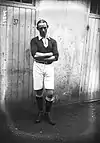
Founded in April 1902, the Section paloise de ligue girondine is an all-round sports club in Pau. Since 1905, it is simply called Section paloise. At that time, rugby or "rugby football" was hugely popular. The club was first established as a Barette (sport) team, yet the club very quickly turned towards this new sport of rugby union. A rugby club had already been formed on November 12, 1899, since the Stade palois, had been founded in café on rue Bayard. The Stade Palois was thus integrated into Section to form the dominant club in bearnese rugby. In 1912, Section Paloise abandoned its blue and black jerseys, in order to definitively adopt green and white as its colours. The club was then led by Welshman Thomas Potter (rugby union), who took on the role of player-coach until the outbreak of the Great War. The club (all sports combined) paid a heavy price, with around forty deaths on the battlefields.

Section Paloise, now under the leadership of Gilbert Pierrot, achieved remarkable success during the 1927-1928 season, as the team won the title of Côte Basque champion for the second consecutive year. Subsequently, it finished first in its pool of 5 in the French championship. In the following groups of 4, it defeated Stade Français, USA Perpignan and Lyon OU as well as the defending champions Stade Toulousain in the semi-final by 3-0 after extra time (1 try at zero).
The final took place in Toulouse in May 1928, where Section Paloise faced off against US Quillan. A crowd of 30,000 spectators attended this highly anticipated match against the players of patron Jean Bourrel, an industrialist who had made his fortune in the hat industry. Indeed, Bourrel was determined to create the best possible team in Quillan and was willing to spend extravagantly to achieve that goal. For Jean Bourrel, a hat maker by profession, the logic was clear: "I am certain to have more commercial publicity by putting together a team to compete for the French championship than by plastering posters around the region." Thus, in 1926, no one seemed surprised when no fewer than seven players from US Perpignan, the French champions in 1925 and finalists in 1926, suddenly arrived in this town in Aude. Later on, the group was further reinforced with the arrival of five international players the following year, including Louis Destarac from Tarbes.
The final was hard-fought and close, but Section Paloise managed to prevail with a score of 6-4, thereby claiming the club's first-ever Bouclier de Brennus. The local newspaper, Le Patriote des Pyrénées, enthusiastically reported on this victory, describing how the players of Section Paloise, nicknamed the "bérets" (berets), had succeeded in defeating the players of Quillan, nicknamed the "chapeaux" (hats).
Another local newspaper L'Indépendant des Basses-Pyrénées also echoed the feat achieved by the team from Pau, referring to it as a "triumph." Their success generated strong enthusiasm among supporters, and during the final in Toulouse, no less than 25,000 Pau and Béarn supporters were present to cheer on their team, which was wearing white that day. The emblematic captain at the time was Albert Cazenave, who was admirably supported by players such as Georges Caussarieu, David Aguilar, Robert Sarrade, Fernand Taillantou, and the indispensable François Récaborde.
This victory by Section Paloise marked a historic moment in the club's history and was celebrated fervently by the fans.
Before the war, the Section paloise won the Challenge Yves du Manoir in the 1938-1939 edition against RC Toulon by a score of 5-0 after extra time, courtesy of a try by Desperbasque and transformed by the full-back Courtade.
After WWII
In 1946, at the end of the war, the club was once again crowned French champions.[4] Section Paloise, won the prize, beating the likes of Toulouse and Agen. In spite of some uninspiring results during the first phase of the championship, Section successively beat Stade Toulousain in the quarter-finals and Perpignan in the semi-finals (6-3 after extra time) to reach the final against their neighbours from the French capital. However, guided by a series of 12 consecutive victories, FC Lourdes were largely defeated 11-0 at the Parc des Princes in Paris. The press noted then that the Section had a very homogeneous team without "stars" but with a perfect physical and moral condition. Theo Cazenave, Pierre Lauga and captain André Rousse are some of the figures of this remarkable XV.
Section Paloise lost in the semi-finals of the 1950 French championship against the future French Olympic champion, Castres Olympique.
After a French Cup semi-final in 1951, the team won the Yves du Manoir challenge in 1952. In 1959, François Moncla, then international and title holder with Racing Club de France, became captain and a new, younger team was formed.
The team slowly took its bearings and in 1964, Section Paloise became French champion for the third time, beating the great Béziers 13-0. Its stars at the time were Moncla, Piqué, Capdouze, Saux, Etcheverry and Abadie.
However, all had started badly during this season, the press even published a headline in October entitled La Section en perdition (Section in Perdition). The team had just lost 31-3 in Agen and lost at Croix du Prince by 24-3 to their heavyweight rivals. The journey slowly took shape with successive victories over Brive, Chalon, Bayonne, and Narbonne before the triumph against Béziers, beaten 14-0 with two tries by Jean Capdouze.
Jean Piqué played the final of the 1963–64 French Rugby Union Championship with a photo of his wife on him during the match. Piqué, a father of a two-year-old daughter, lost his first wife to sudden leukemia during the playoffs. He played the final with a photo of her on him.
The title triggered several days of celebration in the capital of Béarn, and the Boulevard des Pyrénées was flooded with an unprecedented green and white crowd, with 30,000 people.
Béziers got its revenge in the Challenge the following week, preventing Pau from achieving the double.
Robert Paparemborde era (1965 - 1990)
The following seasons were more unspectacular from a sporting point of view, with captain Moncla stopping his career at the beginning of the 1967 season. From 1968 onwards, a new development took place, as the positions of General President and Rugby President could not be held concurrently. It was the departure of Albert Cazenave after 16 years as President, and that of his brother Theo from the role of coach.
That same year, the Section saw the birth of a young talent from Laruns in the Ossau Valley. Robert Paparemborde started his first game as an inside centre but it was as a prop that he became a world reference. Laurent Cabannes made his debut at the age of 17 and years later became one of the world's best flankers. On a sporting level, the first team lost to Montferrand 14-11 in the quarter-finals in 1970 and reached the semi-finals against Narbonne in 1974, having gone past Agen in the round of 16 by a surprise 24-21. The team spent a single season in Group B, 1977-1978, and then moved back to the elite immediately.
Section did not fulfil its 18-year rule, after 1928, 1946 and 1964 as they did not win another title in 1982, narrowly defeated by SU Agen in the Round of 16. They did, however, reach the quarter-finals in 1983 against Nice.
At the end of the 1980s, with two seasons in Group B, the first team reached the finals of this category but narrowly failed (1989 and 1990). The Section was then in a delicate sporting and economic situation.
Revival then fall (1990 - 2006)
In October 1990, the club left its historic Stade de la Croix du Prince for the more modern Stade du Hameau. This move helped the club to solve its debts, as the Croix du Prince was sold to the Pau Town Hall. The beginning of the 1990s saw the first team begin to recover and they remained in Group A in 1991 and 1992. In 1993, the team even reached the Top 16 but failed to qualify for the quarter-finals in favour of FC Grenoble who were deprived of the title after a refereeing error and RC Narbonne who played their fifth quarter-final in 6 seasons.
During the 1994 and 1995 seasons, Section Paloise did not reach the top 16 and participated in the Moga Cup where it failed in the final against Aviron Bayonnais in Mont de Marsan.
Rugby Palois moves up in the hierarchy and obtains again good results. Also in 1996, the Section played in the final of the Challenge Yves du Manoir and was eliminated in the semi-final of the French championship, each time against Brive. These results enabled the club to qualify for the second edition of the European Rugby XV Cup.
In 1997, the Section was once again awarded a national trophy which was the Yves du Manoir challenge, while reaching the quarter-finals of the French championship, again both times against the same team from Bourgoin. In 1998, it reached the semi-finals of the H-Cup, beaten only by the future winner of the competition (the English Bath). In 2000, the Section won the European Shield against Castres by 34-21 in Toulouse. The same season, Pau eliminates Montferrand in the quarter-final of the French championship but misses the final by a hair's breadth against Colomiers in the semi-final. The Section lost 24-22 after extra time, the team is led by Joël Rey, David Aucagne, Thierry Cléda, Frédéric Torossian and David Dantiacq.
The following seasons were much more disappointing. The team is often satisfied to play the maintenance in the first division except a qualification in play-off in 2003, and a good course in European challenge in 2005 which sees it only failing in the final against the Sale Sharks. The Section is finally relegated to Pro D2 after the 2005-2006 season, a relegation that it had already avoided by very little the previous season (victory in the play-off). The club plays in Pro D2 from the 2006-2007 season hoping for a better tomorrow, betting a lot on training, like those youngsters trained at the club and who wore the jersey of the French Rugby team during the 2000s: Beauxis, Brusque, Harinordoquy, Traille and Bernat-Salles.
Rebuilding and then returning to ambitions (since 2006)
Section Paloise returned to the elite of French rugby in 2011-2012, after a season that saw it finish second in the championship, and undefeated at home, lost in the final against Stade Montois (29-20). In 2012-2013, the club again reached the Pro D2 final to gain promotion to the Top 14. They most recently earned promotion by winning the championship of the second-level Rugby Pro D2 in 2015, nine years after having been relegated from the top flight.[5]
On this occasion, the clubs of supporters, partners and other works councils organised a trip that will bring together no less than 142 buses to the Stade Chaban-Delmas. However, at this stage of the competition, the Section still lost to CA Brive by a score of 30-10 in front of 33,175 spectators.
After another disappointment the following season against La Rochelle, defeated 35-18 at the Stade Marcel-Deflandre in the semi-finals, the club made a good recruitment for the coming season with the arrival of manager Simon Mannix.[6] Section obtained direct access to the Top 14 that year. As soon as the season ended, Simon Mannix used his address book to bring in players like Colin Slade, Carl Hayman and Conrad Smith, considered at that time to be of the best centres in the world.[7]
Smith is now high-performance director at the club.[8]
Mannix was dismissed in 2019 after five seasons, when a string of poor results convinced the board to part ways.[9]
The first team is now coached by Sébastien Piqueronies. As a federal coach, he became the manager of the France national under-20 rugby union team in 2018. He led the team to the double title of world champions in 2018 and 2019.
Club Identity
Colours
The colours of Section Paloise have been green and white since 1912. Previously, the players wore blue and black jerseys (a legacy of Stade palois) which were soon abandoned for these new colours. Jean Plaà (manager at the time) justified this choice as green represents the club's hopes and white the snow of the Pyrenees in Bearn. It has since become customary for the club's teams to wear a white jersey at home and a green jersey away from home.
In recent years, a black and green jersey has been regularly used for playing away.
Logo
The coat of arms of Section Paloise represents the Pic du the Midi d'Ossau mountain, surrounded by green and white. Pic du the Midi d'Ossau is a Pyrenean peak, locally nicknamed Jean-Pierre which symbolises the region for many people from Béarn.
A second version of the coat of arms was released in 1998 for the creation of the professional structure, displayed on the jerseys of the first team at the beginning of the 2001-2002 season. This one then keeps the famous peak as emblem but evolves towards a darker bottle green colour. The latest version of the coat of arms dates from the start of the 2012-2013 season. The colour of the coat of arms reverts to the original lighter green and incorporates the new appellation Section paloise Béarn Pyrénées. With this name change, the club symbolises the desire of its directors to further anchor the club as the driving force behind professional rugby in Béarn but more generally in the Pyrenees.
Hymn and songs
Section Paloise's official anthem is the Honhada since March 2012. The song, composed by Didier Fois (Arraya, Hestiv'Oc festival, Ostau Bearnés), was met with a mixed reception in its early days and soon became a must for fans, who sing it at the start of every match. The lyrics of the song were composed on the air of the famous Scottish ballad The water is wide, also covered by Renaud in the Northern Irish Ballad.
Traditional Bearn songs from local band Nadau such as the Encantada and De cap tà l'immortèla as well as the famous Béarn anthem Si Canti are also widely popular among the local faithful. De cap tà l'immortèla had long been considered to be the unofficial anthem Section Paloise as it is so popular with the public.
Mascot
The club's mascot is a bear named Bearnie (pronounced "Bernie"). The bear was chosen because it is one of the symbols of the Pyrenees, and its name is a play on words with Béarn, the region of which Pau has been the capital since 1464.
Club honours
- French premiership
- Champions: 1928, 1946, 1964
- Challenge Yves du Manoir
- Champions: 1939, 1952, 1997
- European Challenge Cup
- Champions: 2000
- Rugby Pro D2
- Champions: 2015
Finals results
French championship
| Date | Winner | Runner-up | Score | Venue | Attendance |
| 6 May 1928 | Section Paloise | US Quillan | 6-4 | Stade des Ponts Jumeaux, Toulouse | 20.000 |
| 24 March 1946 | Section Paloise | FC Lourdes | 11-0 | Parc des Princes, Paris | 30.000 |
| 24 May 1964 | Section Paloise | AS Béziers | 14-0 | Stade Municipal, Toulouse | 27.797 |
Challenge Cup
| Date | Winner | Runner-up | Score | Venue | Attendance |
| 27 May 2000 | Section Paloise | Castres Olympique | 34-21 | Stade des Sept Deniers, Toulouse | 6.000 |
| 21 May 2005 | Sale Sharks | Section Paloise | 27-3 | Kassam Stadium, Oxford | 7.230 |
Pro D2 promotion playoffs
| Date | Winner | Runner-up | Score | Venue | Attendance |
| 27 May 2012 | Stade Montois | Section Paloise | 29–20 | Stade Chaban-Delmas, Bordeaux | 23,928 |
Current standings
| ||||||||||||||||
| Club | Played | Won | Drawn | Lost | Points For | Points Against | Points Diff. | Try Bonus | Losing Bonus | Points | ||||||
|---|---|---|---|---|---|---|---|---|---|---|---|---|---|---|---|---|
| 1 | Stade Français | 3 | 3 | 0 | 0 | 81 | 34 | +47 | 1 | 0 | 13 | |||||
| 2 | Pau | 3 | 2 | 0 | 1 | 82 | 51 | +31 | 1 | 1 | 10 | |||||
| 3 | Castres | 3 | 2 | 0 | 1 | 84 | 48 | +36 | 1 | 1 | 10 | |||||
| 4 | Racing | 3 | 2 | 0 | 1 | 99 | 47 | +52 | 1 | 1 | 10 | |||||
| 5 | Toulouse | 3 | 2 | 0 | 1 | 72 | 60 | +12 | 1 | 0 | 9 | |||||
| 6 | Clermont | 3 | 2 | 0 | 1 | 66 | 60 | +6 | 1 | 0 | 9 | |||||
| 7 | Bordeaux Bègles | 3 | 2 | 0 | 1 | 65 | 63 | +2 | 0 | 1 | 9 | |||||
| 8 | Lyon | 3 | 1 | 0 | 2 | 51 | 90 | –39 | 1 | 0 | 5 | |||||
| 9 | La Rochelle | 3 | 1 | 0 | 2 | 60 | 51 | +9 | 0 | 1 | 5 | |||||
| 10 | Toulon | 3 | 1 | 0 | 2 | 51 | 63 | –12 | 0 | 1 | 5 | |||||
| 11 | Bayonne | 3 | 1 | 0 | 2 | 40 | 63 | –23 | 0 | 1 | 5 | |||||
| 12 | Oyonnax | 3 | 1 | 0 | 2 | 75 | 72 | +3 | 0 | 0 | 4 | |||||
| 13 | Montpellier | 3 | 1 | 0 | 2 | 48 | 77 | –29 | 0 | 0 | 4 | |||||
| 14 | Perpignan | 3 | 0 | 0 | 3 | 31 | 126 | –95 | 0 | 0 | 0 | |||||
|
If teams are level at any stage, tiebreakers are applied in the following order:
| ||||||||||||||||
| Green background (rows 1 and 2) receive semi-final play-off places and receive berths in the 2024–25 European Rugby Champions Cup. Blue background (rows 3 to 6) receive quarter-final play-off places, and receive berths in the Champions Cup. Plain background indicates teams that earn a place in the 2024–25 European Rugby Challenge Cup. Pink background (row 13) will be contest a play-off with the runners-up of the 2023–24 Rugby Pro D2 season for a place in the 2024–25 Top 14 season. Red background (row 14) will be relegated to Rugby Pro D2. Updated: 2 September 2023 | ||||||||||||||||
Current squad
Main squad[10]
| The Pau squad for the 2023–24 season | ||
|---|---|---|
Props
Hookers
Locks
|
Backrow
Scrum-halves Fly-halves
|
Centres
Wingers
Fullbacks
|
| (c) denotes the team captain, Bold denotes internationally capped players.
* denotes players qualified to play for France on residency or dual nationality. ST denotes a short-term signing. | ||
Espoirs squad
| The Section Paloise Espoirs squad | ||
|---|---|---|
Props
Hookers
Locks
|
Backrow
Scrum-halves
Fly-halves
|
Centres
Wingers
Fullbacks
|
| (c) denotes the team captain, Bold denotes internationally capped players.
* denotes players qualified to play for France on residency or dual nationality. ST denotes a short-term signing. | ||
Notable former players
 Karim Bougherara
Karim Bougherara Malik Hamadache
Malik Hamadache Patricio Albacete
Patricio Albacete Lisandro Arbizu
Lisandro Arbizu Santiago Fernandez
Santiago Fernandez Juan Pablo Orlandi
Juan Pablo Orlandi Gonzalo Quesada
Gonzalo Quesada.svg.png.webp) Garrick Morgan
Garrick Morgan.svg.png.webp) Jesse Mogg
Jesse Mogg.svg.png.webp) Ben Mowen
Ben Mowen.svg.png.webp) Matt Philip
Matt Philip.svg.png.webp) Afusipa Taumoepeau
Afusipa Taumoepeau.svg.png.webp) Mike Burak
Mike Burak.svg.png.webp) Al Charron
Al Charron.svg.png.webp) Ryan Smith
Ryan Smith.svg.png.webp) Matt Tierney
Matt Tierney Sergio Valdés
Sergio Valdés Steffon Armitage
Steffon Armitage Joseph Mbu
Joseph Mbu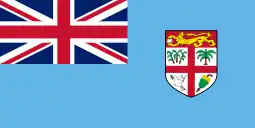 Sireli Bobo
Sireli Bobo Saula Radidi
Saula Radidi Aminiasi Tuimaba
Aminiasi Tuimaba Watisoni Votu
Watisoni Votu Dominiko Waqaniburotu
Dominiko Waqaniburotu André Abadie
André Abadie Jean Michel Agest
Jean Michel Agest Nicolas Agnesi
Nicolas Agnesi David Aguilar
David Aguilar Laurent Arbo
Laurent Arbo David Aucagne
David Aucagne Lionel Beauxis
Lionel Beauxis Philippe Bernat-Salles
Philippe Bernat-Salles Thomas Bianchin
Thomas Bianchin Pascal Bomati
Pascal Bomati Hugo Bonneval
Hugo Bonneval Mohamed Boughanmi
Mohamed Boughanmi Jean Bouilhou
Jean Bouilhou Sébastien Bruno
Sébastien Bruno Nicolas Brusque
Nicolas Brusque Laurent Cabannes
Laurent Cabannes Romain Cabannes
Romain Cabannes Jean Capdouze
Jean Capdouze Philippe Carbonneau
Philippe Carbonneau Paul Cassagne
Paul Cassagne Jean-Emmanuel Cassin
Jean-Emmanuel Cassin Florian Cazalot
Florian Cazalot Jean-Charles Cistacq
Jean-Charles Cistacq Marc Dal Maso
Marc Dal Maso David Dantiacq
David Dantiacq Clément Darbo
Clément Darbo Ibrahim Diarra
Ibrahim Diarra Sébastien Descons
Sébastien Descons Julien Delannoy
Julien Delannoy Thomas Domingo
Thomas Domingo Mathieu Dourthe
Mathieu Dourthe Louis Dupichot
Louis Dupichot Marc Etcheverry
Marc Etcheverry Sébastien Fauqué
Sébastien Fauqué Lionel Faure
Lionel Faure Romain Froment
Romain Froment Jean-Michel Gonzalez
Jean-Michel Gonzalez Pierrick Gunther
Pierrick Gunther Imanol Harinordoquy
Imanol Harinordoquy Antoine Hastoy
Antoine Hastoy Jean Hatchondo
Jean Hatchondo Jean Louis Jordana
Jean Louis Jordana Thierry Lacrampe
Thierry Lacrampe Christophe Laussucq
Christophe Laussucq Claude Mantoulan
Claude Mantoulan Henri Marracq
Henri Marracq Lionel Mallier
Lionel Mallier François Moncla
François Moncla Robert Paparemborde
Robert Paparemborde Baptiste Pesenti
Baptiste Pesenti Julien Pierre
Julien Pierre Jean Piqué
Jean Piqué Adrien Planté
Adrien Planté Lucas Pointud
Lucas Pointud Bastien Pourailly
Bastien Pourailly Jean Preux
Jean Preux Jean-Baptiste Peyras-Loustalet
Jean-Baptiste Peyras-Loustalet Joel Rey
Joel Rey Jean Saux
Jean Saux Atila Septar
Atila Septar Michel Sorondo
Michel Sorondo Jean-Marc Souverbie
Jean-Marc Souverbie Patrick Tabacco
Patrick Tabacco Fernand Taillantou
Fernand Taillantou Benjamin Thiéry
Benjamin Thiéry Julien Tomas
Julien Tomas Frederic Torossian
Frederic Torossian Damien Traille
Damien Traille Pierre Triep-Capdeville
Pierre Triep-Capdeville Quentin Valançon
Quentin Valançon Merab Kvirikashvili
Merab Kvirikashvili Mamuka Magrakvelidze
Mamuka Magrakvelidze Paddy Butler
Paddy Butler James Coughlan
James Coughlan Marco Zanon
Marco Zanon Abdellatif Boutaty
Abdellatif Boutaty Jamie Mackintosh
Jamie Mackintosh Elijah Niko
Elijah Niko Peter Saili
Peter Saili Colin Slade
Colin Slade Ben Smith
Ben Smith Conrad Smith
Conrad Smith Benson Stanley
Benson Stanley Tom Taylor
Tom Taylor Luke Whitelock
Luke Whitelock Hari Dumitraş
Hari Dumitraş Iulian Dumitraș
Iulian Dumitraș Alexandru Manta
Alexandru Manta Răzvan Mavrodin
Răzvan Mavrodin Sorin Socol
Sorin Socol Marius Țincu
Marius Țincu Lourens Adriaanse
Lourens Adriaanse Elton Jantjies
Elton Jantjies Viacheslav Grachev
Viacheslav Grachev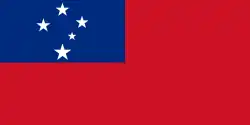 Jeremy Tomuli
Jeremy Tomuli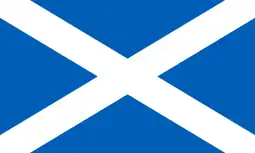 Euan Murray
Euan Murray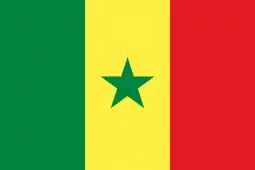 Mohamadou Diarra
Mohamadou Diarra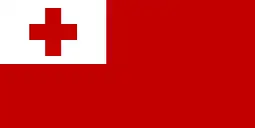 Tonga Leaʻaetoa
Tonga Leaʻaetoa Taniela Moa
Taniela Moa
| Rank | Name | Total caps
while playing for Section Paloise |
|---|---|---|
| 1 | 52 (52) | |
| 2 | 34 (86) | |
| 3 | 28 (82) | |
| 4 | 22 (22) | |
| 5 | 21 (41) | |
| 6 | 18 (31) | |
| 7 | 18 (18) | |
| 8 | 15 (15) | |
| 9 | 15 (15) | |
| 10 | 9 (9) | |
| 11 | 6 (6) | |
| 12 | 6 (6) | |
| 13 | 6 (6) | |
| 14 | 5 (5) | |
| 15 | 3 (3) | |
| 16 | 3 (3) | |
| 17 | 2 (32) | |
| 18 | 2 (2) | |
| 19 | 1 (26) | |
| 20 | 1 (7) | |
| 21 | 1 (1) | |
| 22 | 1 (1) | |
| 23 | 1 (1) | |
| 24 | 1 (1) | |
| 25 | 1 (1) | |
| 26 | 1 (1) | |
| 27 | 1 (1) | |
| 28 | 1 (1) | |
| 29 | 1 (1) | |
| 30 | 1 (1) | |
| 31 | 1 (1) |
Rivalries
The high density of rugby clubs in south-west France has led to numerous rivalries between SectionPaloise and neighbouring clubs. In Béarn, the rivalry has mainly centred around the often muscular clashes against FC Oloron, also known as Fécéo.
However, Stadoceste tarbais has been another great historical rival since the 1910s.
Finally, Section has long-standing sporting rivalries dating back to the 1910s with the other major historical clubs of the Adour region: Aviron Bayonnais, Biarritz Olympique, FC Lourdes, Stade Montois & US Dax.
The basques of Aviron Bayonnais have not been able to win in Pau against Section since 1946.
References
- Fallon, John (2018-10-13). "Irish rugby's own flight of the wild geese". Irish Examiner. Retrieved 2021-01-05.
- L'hymne de la Section : La Honhada, retrieved 2023-01-19
- "TotalEnergies and the Section Paloise: more than 30 years of shared history". TotalEnergies.com. Retrieved 2023-09-12.
- Chandler, Timothy J. L.; Nauright, John (2013-09-13). Making the Rugby World: Race, Gender, Commerce. Routledge. ISBN 978-1-135-22722-7.
- "PRO D2, J27 - Pau – Montauban : la Section retrouve l'élite" (Press release). Ligue nationale de rugby. 11 April 2015. Archived from the original on 19 April 2015. Retrieved 12 April 2015.
- "Ex-All Black Simon Mannix warns French pay days numbered". Stuff. 2020-05-01. Retrieved 2021-01-05.
- "Rugby: Former All Black Colin Slade explains why the Top 14 is on a completely different level to Super Rugby". NZ Herald. Retrieved 2021-01-05.
- "Conrad Smith: Moving the Six Nations will work for the betterment of rugby". The RUGBY Paper. 2020-06-16. Retrieved 2021-01-05.
- "Former All Black Simon Mannix's surprise adventure in Singapore". Stuff. 2020-05-02. Retrieved 2021-01-05.
- "Rugby transfers for Pau for 2023/2024". all.rugby. Retrieved 2023-07-02.
External links
 Media related to Section paloise at Wikimedia Commons
Media related to Section paloise at Wikimedia Commons- (in French) Section Paloise Official website